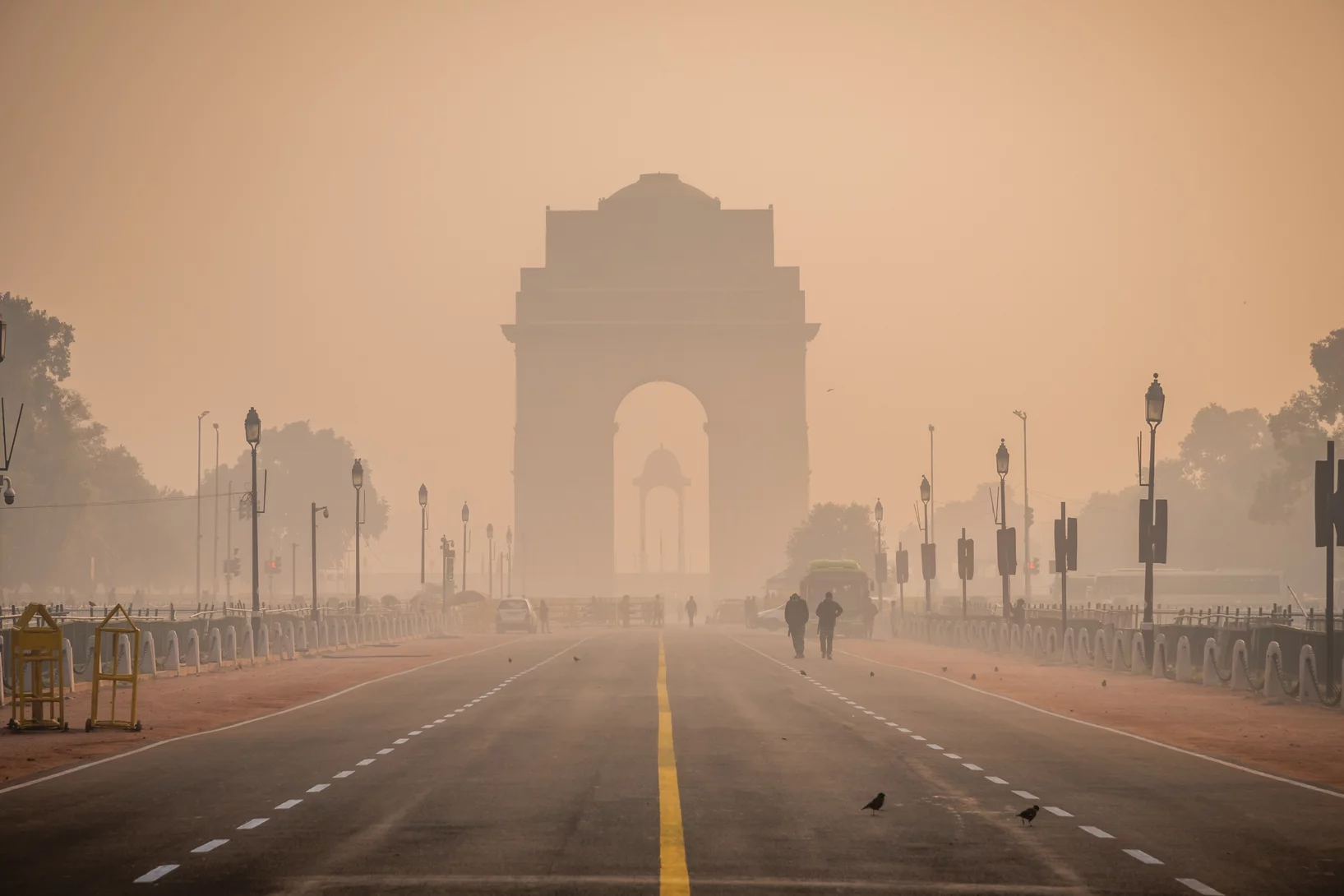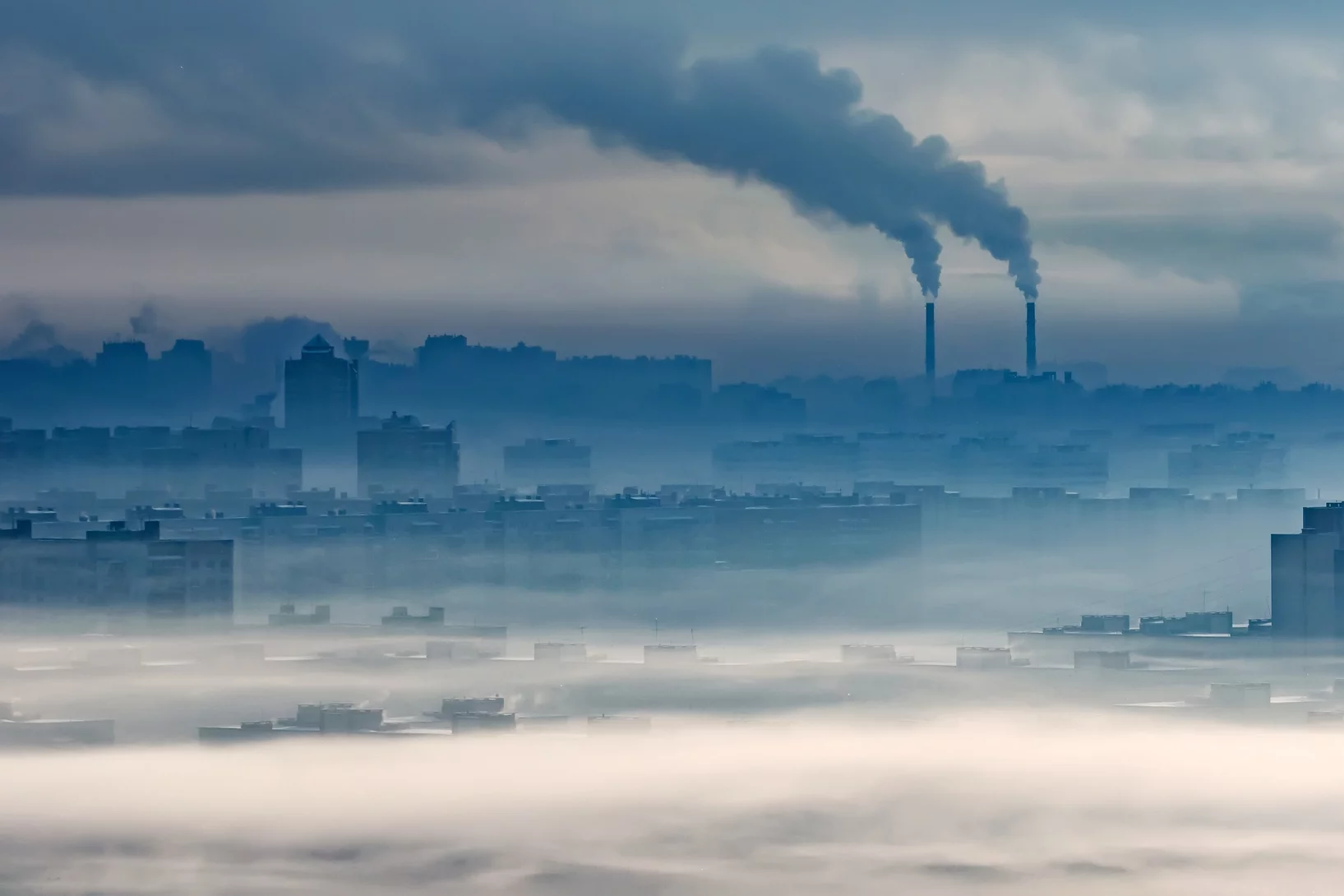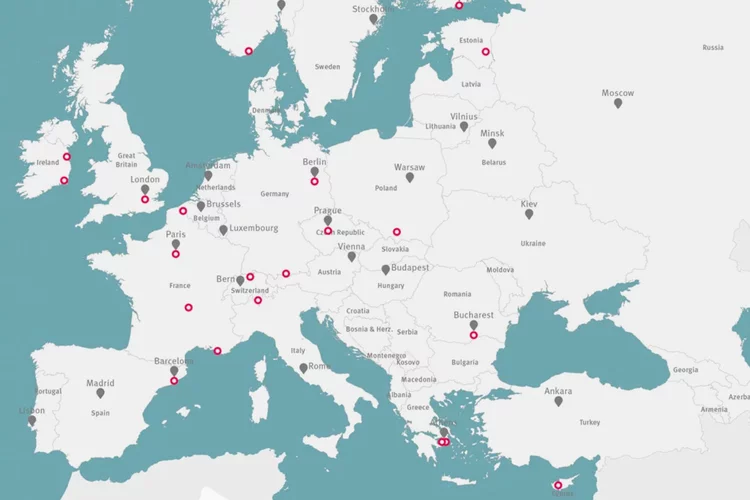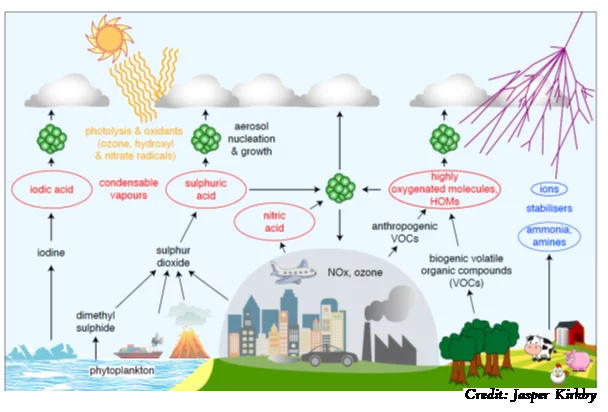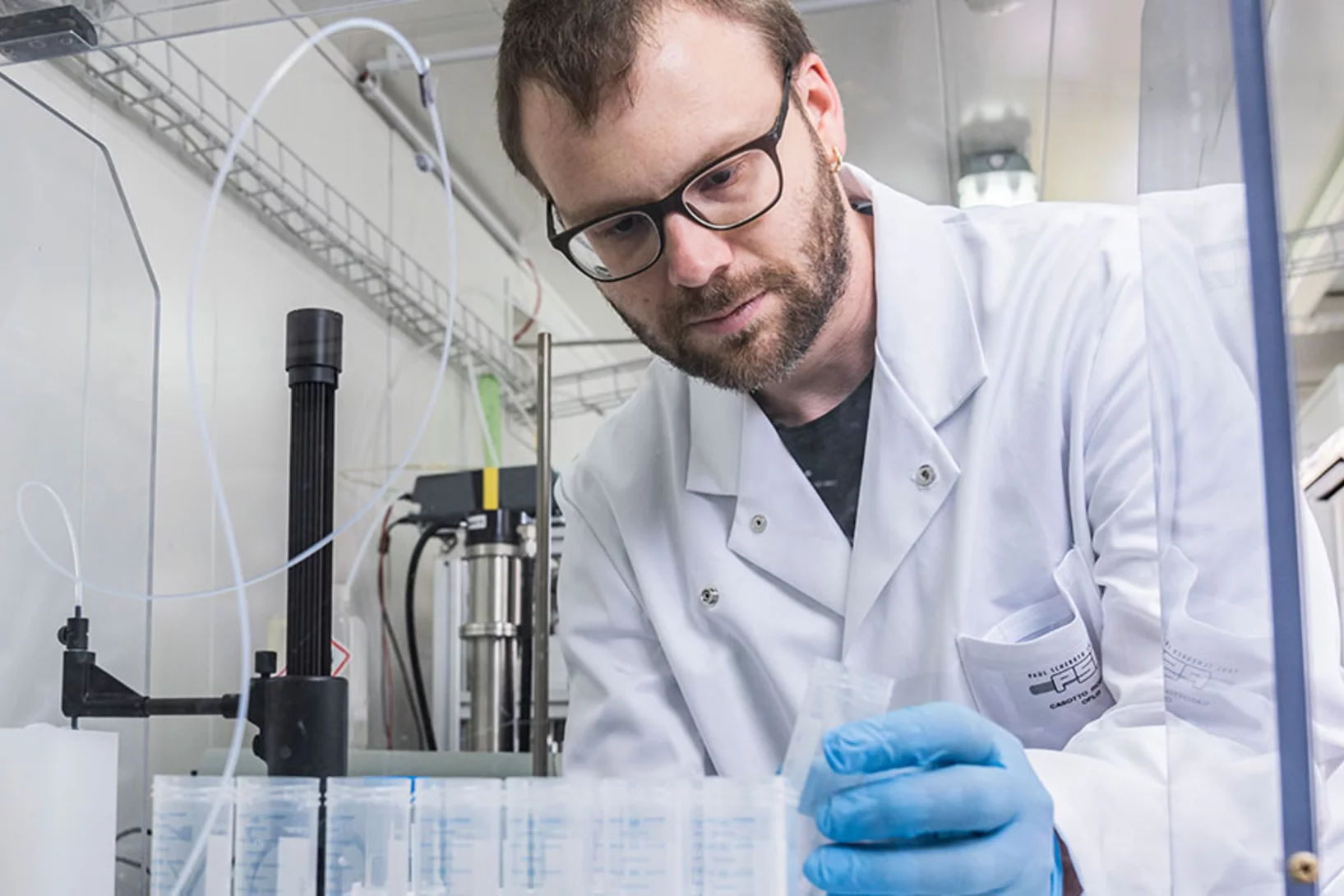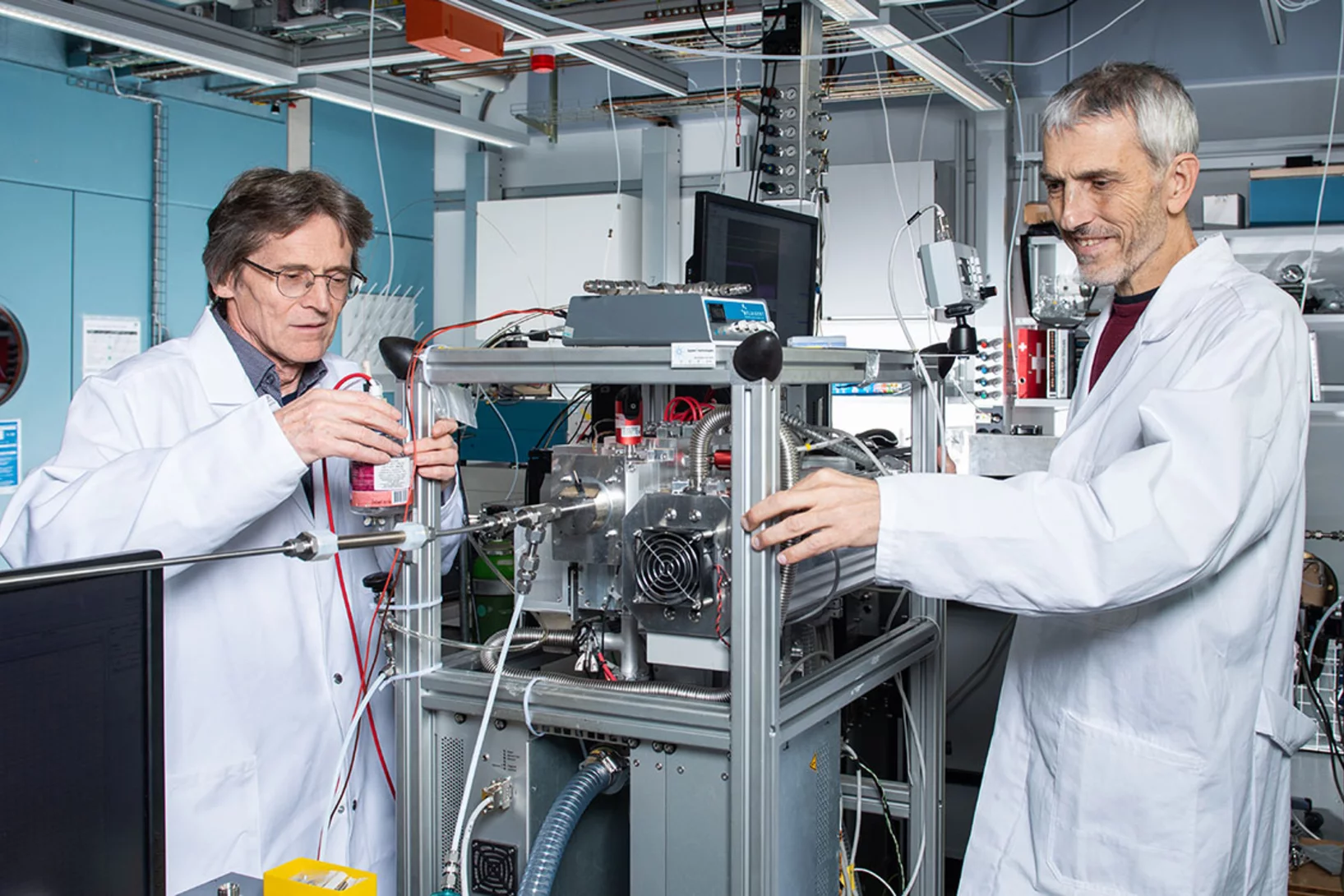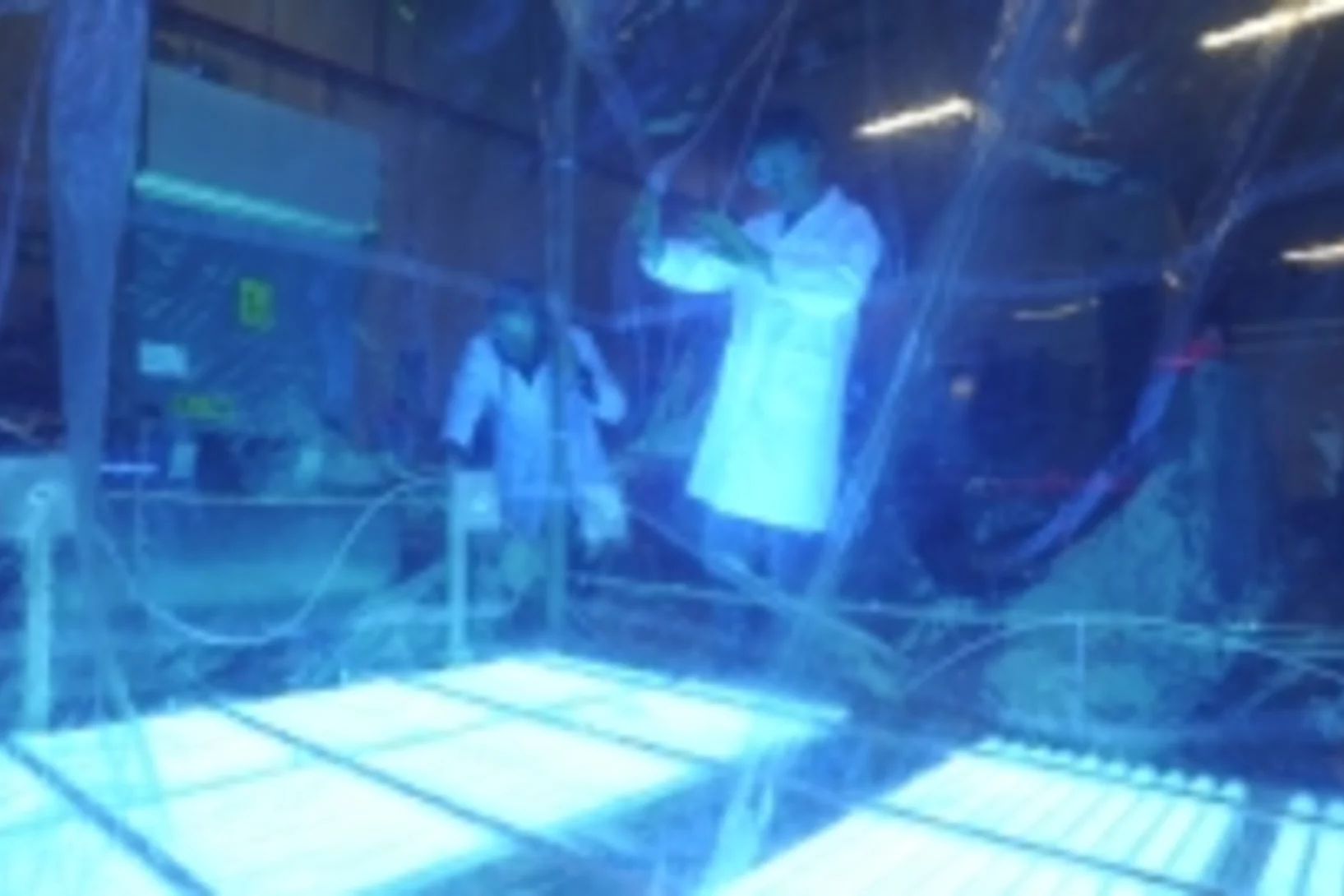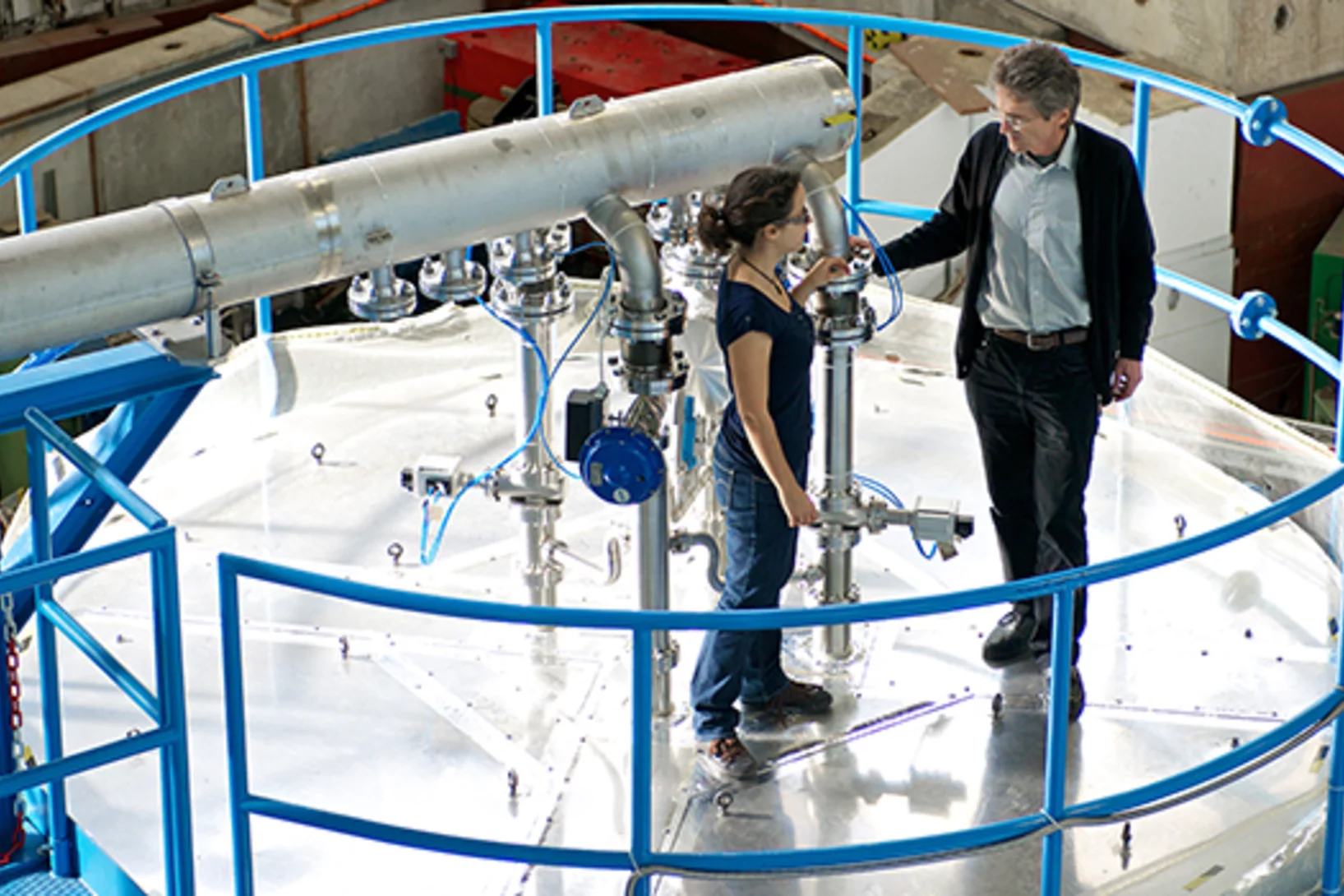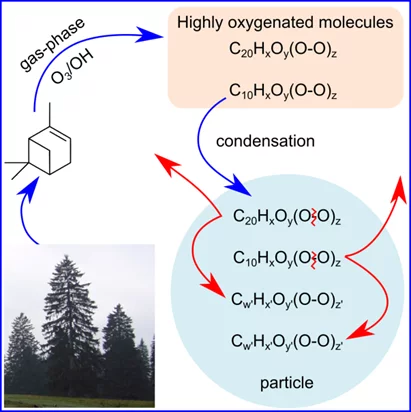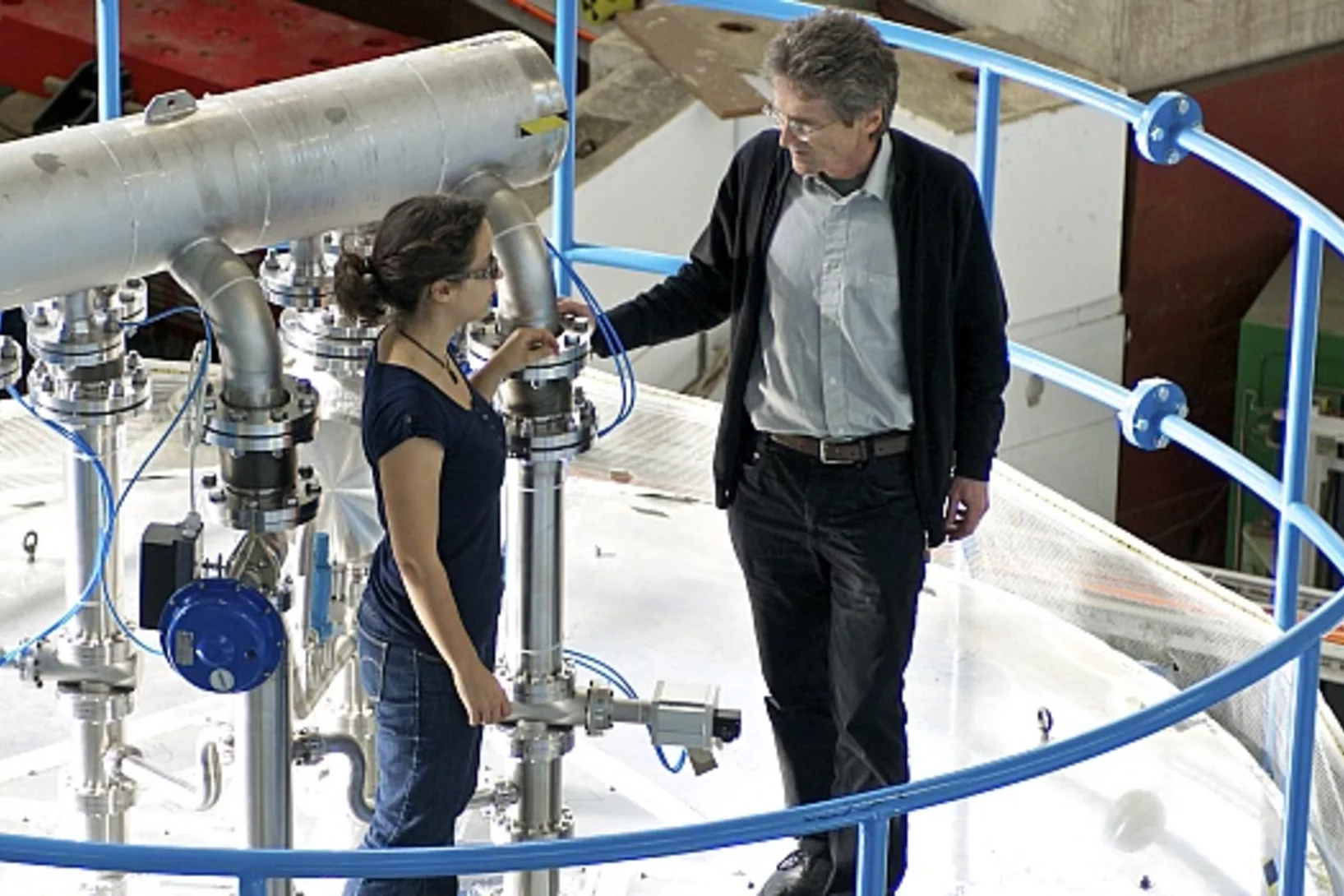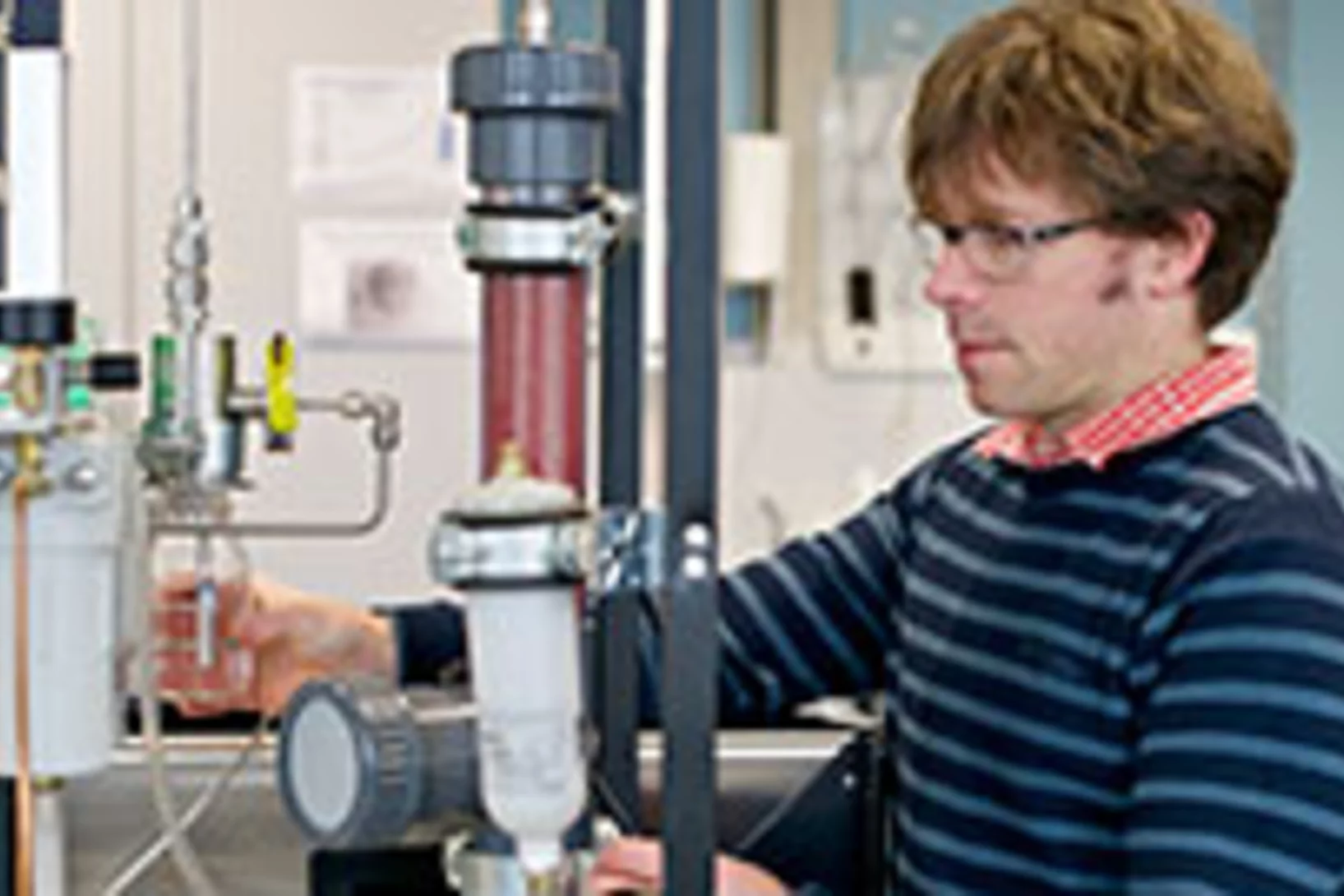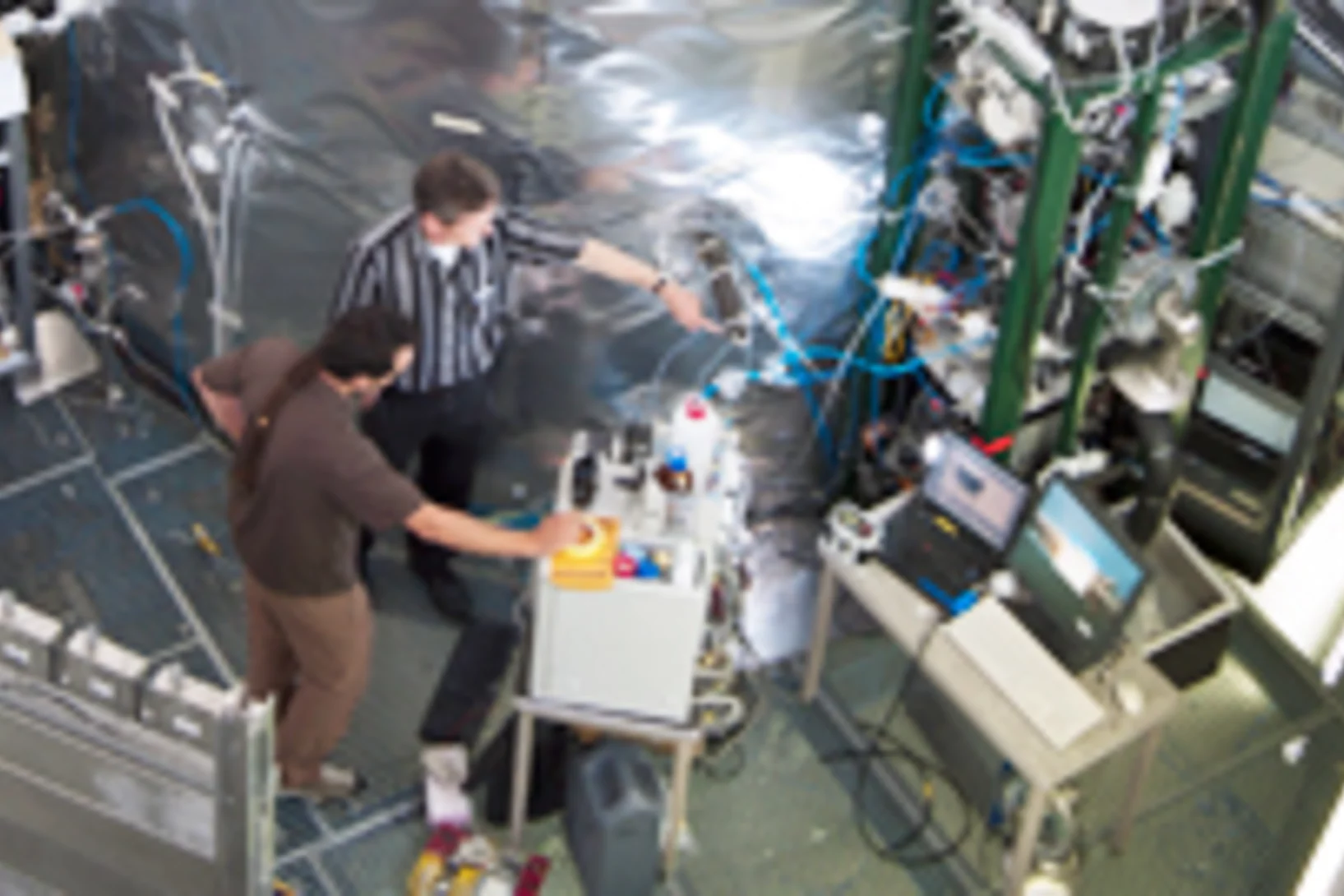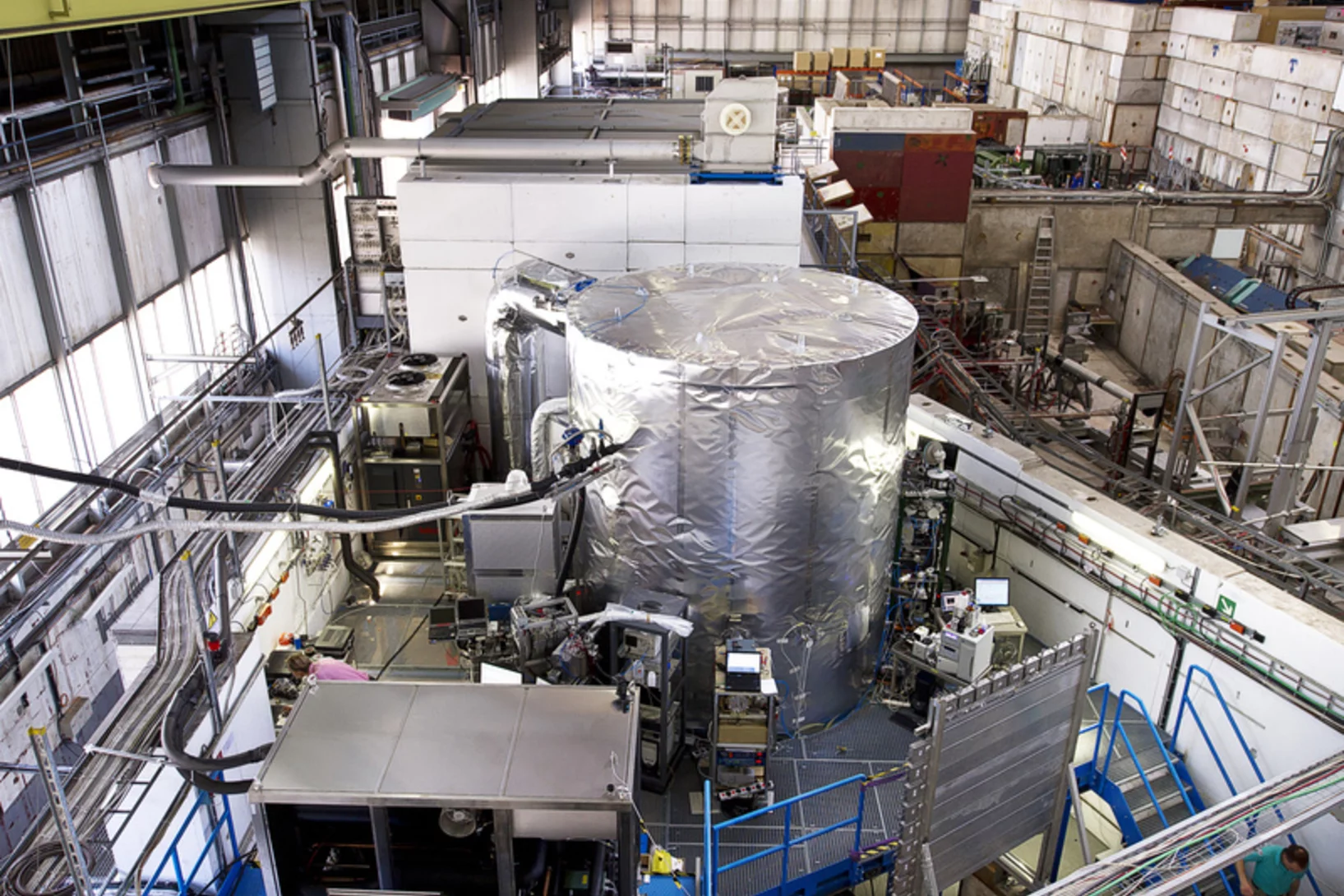Show filters
Both natural and human emissions shape cloud formation high above Earth
What happens inside the CLOUD chamber?
Study reveals: Smoke from crop residue burning worsens air pollution in Indian cities
Identifying the main source of air pollution in Indian cities is crucial to reducing the many deaths caused by fine particulate matter (PM₂.₅) – deaths that during the harvest season can account for up to half of all air pollution-related fatalities. An international research team lead by the Paul Scherrer Institute (PSI), funded by the Swiss Agency for Development and Cooperation (SDC) has investigated in detail the sources of the organic components of fine particulate matter in the northern Indian cities of Delhi and Kanpur, located in the Indo-Gangetic Plain. Using novel high-resolution molecular measurement techniques and advanced data analysis, the researchers were able to precisely identify and quantify the sources of organic fine particulate matter.
Schadstoffe entstehen oft erst in der Luft
Forschende des PSI haben im CLOUD-Experiment am CERN mit nie da gewesener Präzision gemessen, wie sich organische Luftschadstoffe bilden und verteilen.
Preparing the Future of PSI Large Facilities in Atmospheric Research
The Multiphase Chemistry Group in the Laboratory of Atmospheric Chemistry (LAC) looks back to a nearly 20 years record of activities with in situ X-ray photoelectron spectroscopy (XPS) and in situ scanning transmission X-ray spectromicroscopy (STXM) to address key fundamental questions in atmospheric chemistry. This is the time to consider new horizons, align with current and future needs in atmospheric sciences, and to identify novel opportunities driven by upcoming trends in methods, technologies and facilities. This has been the topic of the Workshop ‘X-ray and Neutron Spectroscopy, Scattering and Imaging in Atmospheric Chemistry’, held at PSI 13 – 15 November 2024.
Quellen für Smog in Peking identifiziert
Forschende am PSI ermitteln: Smog-Ursachen in Peking sind weiträumig.
Wie die Luft von Neu-Delhi sauberer wird
PSI-Forschende sind auf den Spuren pathogener Aerosole in Indien.
Wie Bäume die Wolkenbildung beeinflussen
Forschende des PSI haben einen bislang unbeachteten Faktor der Wolkenbildung näher bestimmt. Das könnte helfen, Klimaprognosen zu verbessern.
Ursache für extreme nächtliche Luft-Verschmutzung in New Delhi aufgeklärt
Forschende des PSI finden die Ursache für die hohe Luftverschmutzung in New Delhi bei Nacht.
Europakarte der Aerosolverschmutzung kann der öffentlichen Gesundheit dienen
Forschende haben an 22 Standorten in Europa die Quellen der Aerosolverschmutzung bestimmt.
PSI maintains its leading role in the CLOUD experiment at CERN
The CLOUD experiment at CERN will be recreating particle formation in key regions of the globe to understand the effects of these particles on regional climates
Successful Ambizione Grant Applicant
Kaspar Dällenbach, Scientist at the Laboratory of Atmospheric Chemistry (LAC) at the Paul Scherrer Institute (PSI) was granted the Ambizione Grant 2020 with his project “Particulate air pollution sources in low-income megacities (PRESSING)”.
Successful Ambizione Grant applicant
Patrik Winiger, Research Grant Advisor and Project Manager at ETH Zurich, successfully applied for the Ambizione Grant 2020 with the project “Macromolecular Aerosols in the Cryosphere from the Arctic to the Alps – MACrAA”. The idea was developed together with the Laboratory for Atmospheric Chemistry (LAC) at PSI. The LAC is a global leader in aerosol analytics and source identification. They own and operate a unique laboratory infrastructure with various instruments and multiple aerosol simulation chambers available for researchers.
Aerosolbildung in Wolken
Forschende des PSI zeigen erstmals, wie chemische Reaktionen in Wolken das weltweite Klima beeinflussen können.
Welcher Feinstaub das grösste Gesundheitsrisiko birgt
Die Zusammensetzung von Feinstaub kann dessen gesundheitliche Schädlichkeit genauso wie die Menge beeinflussen, zeigen Forschende des PSI in einer aktuellen Studie. Experimente und Modellrechnungen ergaben ausserdem, dass in Europa vor allem Ballungsgebiete besonders hoch mit gesundheitsschädlichem Feinstaub belastet sind.
Newly discovered rapid particle growth rates may be the answer to the mystery of aerosol formation in urban smog
Aerosols, suspended particles or droplets, play a key role in Earth’s atmosphere’s energy balance. They can also result in smog formation in cities, which leads to low visibility and serious health risks for the population. A recent study published in Nature outlines a newly discovered mechanism that may play a key role in the continued survival of particles in wintertime smog.
Erstmals chemische Reaktionen direkt im Feinstaub nachgewiesen
Forschende am Paul Scherrer Institut PSI haben eine neue Methode entwickelt, um Feinstaub noch genauer als bislang zu analysieren. Mit ihrer Hilfe widerlegten sie die Lehrmeinung, dass Moleküle im Feinstaub keine chemischen Umwandlungen mehr eingehen, weil sie in Schwebepartikel eingebunden sind.
Gasoline cars produce more carbonaceous particulate matter than modern filter-equipped diesel cars
In contrast to nitrogen oxides, modern gasoline cars emit much more cancerogenic primary soot (black carbon + primary organic aerosol) and lead to more toxic secondary organic aerosol than modern diesel vehicles.
Die Stoffe, die Wolken heller machen
Wolken bestehen aus winzigen Tröpfchen. Diese Tröpfchen bilden sich, wenn das Wasser an sogenannten Aerosolen kondensiert – an kleinen Partikeln in der Atmosphäre. Um besser zu verstehen, wie wiederum Aerosole entstehen, haben Forschende nun eine umfassende Computersimulation auf der Grundlage detaillierter experimenteller Daten erstellt. Diese Simulation zeigt, dass neben Schwefelsäure noch zwei weitere Substanzen entscheidend an der Bildung von Aerosolen beteiligt sind: organische Verbindungen und Ammoniak. Die Forschungsergebnisse wurden nun im renommierten Fachblatt Science veröffentlicht.
Labile peroxides in secondary organic aerosol
Aerosols, suspended fine liquid or solid particles in the air we breathe, play a central role in many environmental processes through their influence on climate, the hydrological cycle, and their adverse effects on human health. While the mechanisms by which aerosol particles affect our health remain uncertain, the atmospheric oxidation of organic vapors has been shown to be related to the formation of oxygenated organic matter with high oxidative potential, the so-called reactive oxygen species (ROS).
Heutige Messungen liefern Einsichten über Wolken in der Vergangenheit
Forschende haben gezeigt, wie sich aus natürlichen Substanzen Feinstaub in der Atmosphäre bilden kann. Die Ergebnisse werden unser Wissen über die Wolken vor Beginn der Industrialisierung verbessern und so zur genaueren Beschreibung der bisherigen und zukünftigen Klimaentwicklung beitragen.
Recognition as 'Highly Cited Researchers'
Two researchers of the Laboratory of Atmospheric Chemistry at PSI were recognized by Thomson Reuters as Highly Cited Researchers 2015. Their published articles rank in the top 1% most cited articles in their subject field for the year of publication.
Feinstaub aus modernen Benzinmotoren schadet unserer Lunge
Studien belegen seit Jahren, dass Feinstaub aus Benzinmotoren zu Gesundheitsschäden führt. Auch moderne Motorentechnologie bietet da keine Abhilfe, wie Forschende der Universität Bern und des Paul Scherrer Instituts PSI zeigen.
Unscheinbare Dreckschleudern auf zwei Rädern
Kleine Mopeds verschmutzen die Luft in manchen Städten stärker als AutosNicht Autos oder Lastwagen, sondern Mopeds mit Zwei-Takt-Motoren stellen in vielen Städten Asiens, Afrikas und Südeuropas die grösste Quelle für Feinstaub und andere Luftschadstoffe dar. Das zeigt die Studie eines international zusammengesetzten Forscherteams unter der Leitung von Forschenden des Paul Scherrer Instituts PSI. Gründe für die hohen Emissionen sind die Eigenschaften der in Zwei-Takt-Motoren ablaufenden Verbrennung sowie die bisher noch zu milden Emissionsvorschriften für die kleinen Zweiräder. Die Ergebnisse der Studie erscheinen am 13. Mai 2014 im Journal Nature Communications.
Experimente in der Wolke – Wie Russ das Klima beeinflusst
PSI-Forscher Martin Gysel erhält angesehene europäische Förderung (ERC Consolidator Grant) für Untersuchungen zur Rolle von Russ für Wolkenbildung und Atmosphärenerwärmung
Partikelbildung in der Atmosphäre
Wolken bestehen aus Wolkentröpfchen, die sich aus winzigen Partikeln bilden, die in der Atmosphäre schweben. Wie diese Partikel entstehen, ist in grossen Teilen noch nicht verstanden. Nun gelang erstmals die Beschreibung der Partikelbildung aus Aminen und Schwefelsäure. Ein Meilenstein in der Atmosphärenforschung.
CCN formation mechanism in lower troposphere needs revision
Atmospheric aerosols exert an important influence on climate1 through their effects on stratiform cloud albedo and lifetime and the invigoration of convective storms. Model calculations suggest that almost half of the global cloud condensation nuclei in the atmospheric boundary layer may originate from the nucleation of aerosols from trace condensable vapours, although the sensitivity of the number of cloud condensation nuclei to changes of nucleation rate may be small. Despite extensive research, fundamental questions remain about the nucleation rate of sulphuric acid particles and the mechanisms responsible, including the roles of galactic cosmic rays and other chemical species such as ammonia. Here we present the first results from the CLOUD experiment at CERN.
Die Massenkonzentration der isländischen Vulkanasche im europäischen Luftraum
Daten des Paul Scherrer Instituts von der Messtation auf dem Jungfraujoch liefern wichtige Erkenntnisse.Die Eruption des isländischen Vulkans Eyjafjallajokull hat das Fliegen in grossen Teilen Europas zum Erliegen gebracht. Die Entscheide beruhten vor allem auf Modellrechnungen. Wie gefährlich ist nun diese Vulkanasche für Flugzeuge?
Neues aus der Smogkammer: Mechanismen der Partikelbildung in der Atmosphäre entschlüsselt
Ein Paradigmenwechsel in der Atmosphärenforschung zeichnet sich ab: Anders als bisher gedacht ist nicht allein die Schwefelsäure für die Bildung derjenigen Feinstaub-Teilchen verantwortlich, die erst in der Atmosphäre entstehen. Der Mechanismus konnte ganz neu verstanden werden – dank eines Experiments in der Smogkammer des Paul Scherrer Instituts (PSI).
Rätsel geknackt: Wie Feinstaub erst in der Luft entsteht
Forschende des Paul Scherrer Instituts, der University of Colorado und 29 weiterer Forschungseinrichtungen aus verschiedenen Ländern haben die Zusammensetzung der organischen Anteile des Feinstaubs für verschiedene Regionen der Welt untersucht und bestimmt, aus welchen Ursprungssubstanzen er sich jeweils bildet. So konnte erstmals geklärt werden, welche Rolle einzelne Bestandteile der Abgase für die Feinstaubbildung spielen.



